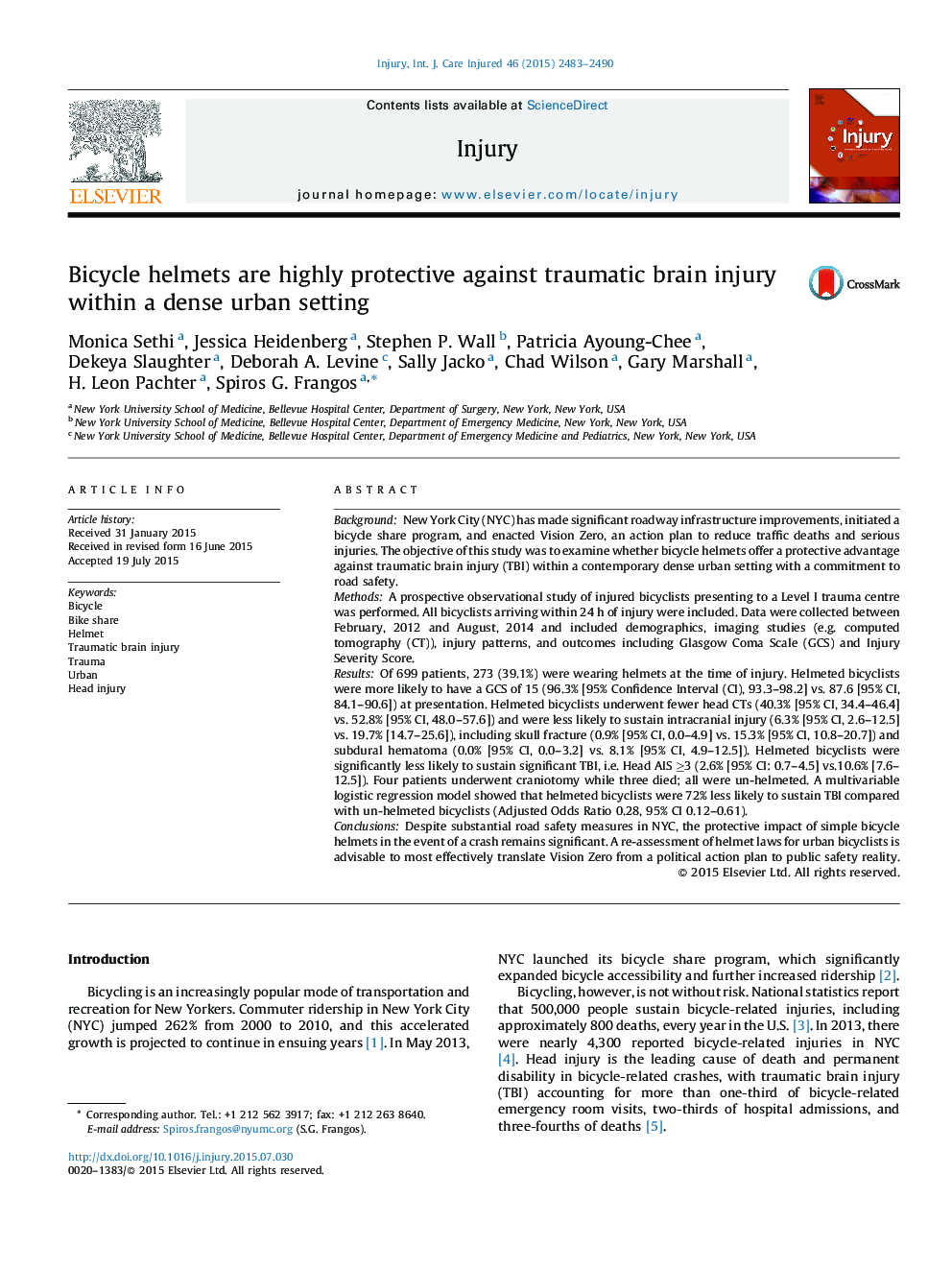| کد مقاله | کد نشریه | سال انتشار | مقاله انگلیسی | نسخه تمام متن |
|---|---|---|---|---|
| 6083043 | 1205983 | 2015 | 8 صفحه PDF | دانلود رایگان |
BackgroundNew York City (NYC) has made significant roadway infrastructure improvements, initiated a bicycle share program, and enacted Vision Zero, an action plan to reduce traffic deaths and serious injuries. The objective of this study was to examine whether bicycle helmets offer a protective advantage against traumatic brain injury (TBI) within a contemporary dense urban setting with a commitment to road safety.MethodsA prospective observational study of injured bicyclists presenting to a Level I trauma centre was performed. All bicyclists arriving within 24 h of injury were included. Data were collected between February, 2012 and August, 2014 and included demographics, imaging studies (e.g. computed tomography (CT)), injury patterns, and outcomes including Glasgow Coma Scale (GCS) and Injury Severity Score.ResultsOf 699 patients, 273 (39.1%) were wearing helmets at the time of injury. Helmeted bicyclists were more likely to have a GCS of 15 (96.3% [95% Confidence Interval (CI), 93.3-98.2] vs. 87.6 [95% CI, 84.1-90.6]) at presentation. Helmeted bicyclists underwent fewer head CTs (40.3% [95% CI, 34.4-46.4] vs. 52.8% [95% CI, 48.0-57.6]) and were less likely to sustain intracranial injury (6.3% [95% CI, 2.6-12.5] vs. 19.7% [14.7-25.6]), including skull fracture (0.9% [95% CI, 0.0-4.9] vs. 15.3% [95% CI, 10.8-20.7]) and subdural hematoma (0.0% [95% CI, 0.0-3.2] vs. 8.1% [95% CI, 4.9-12.5]). Helmeted bicyclists were significantly less likely to sustain significant TBI, i.e. Head AIS â¥3 (2.6% [95% CI: 0.7-4.5] vs.10.6% [7.6-12.5]). Four patients underwent craniotomy while three died; all were un-helmeted. A multivariable logistic regression model showed that helmeted bicyclists were 72% less likely to sustain TBI compared with un-helmeted bicyclists (Adjusted Odds Ratio 0.28, 95% CI 0.12-0.61).ConclusionsDespite substantial road safety measures in NYC, the protective impact of simple bicycle helmets in the event of a crash remains significant. A re-assessment of helmet laws for urban bicyclists is advisable to most effectively translate Vision Zero from a political action plan to public safety reality.
Journal: Injury - Volume 46, Issue 12, December 2015, Pages 2483-2490
